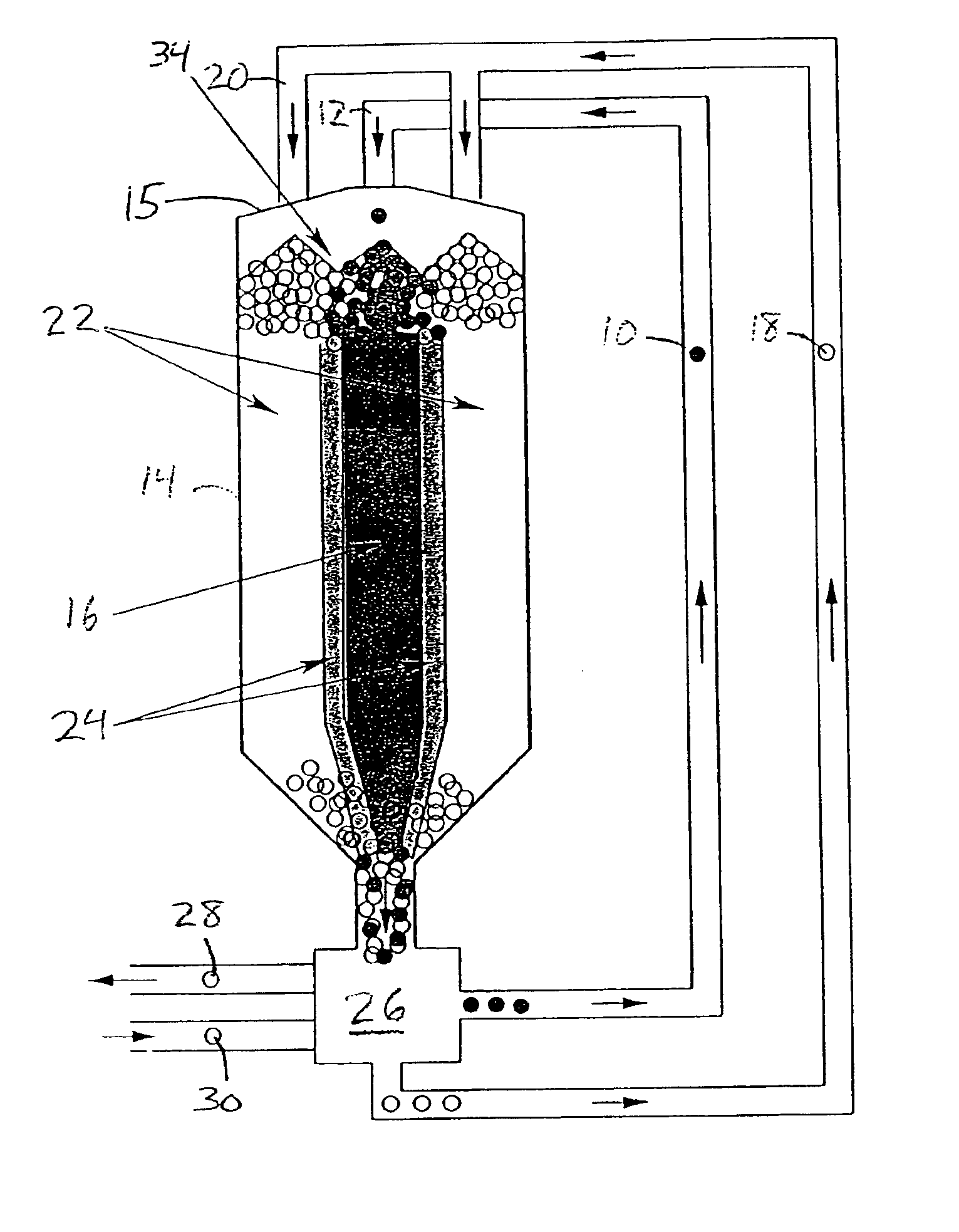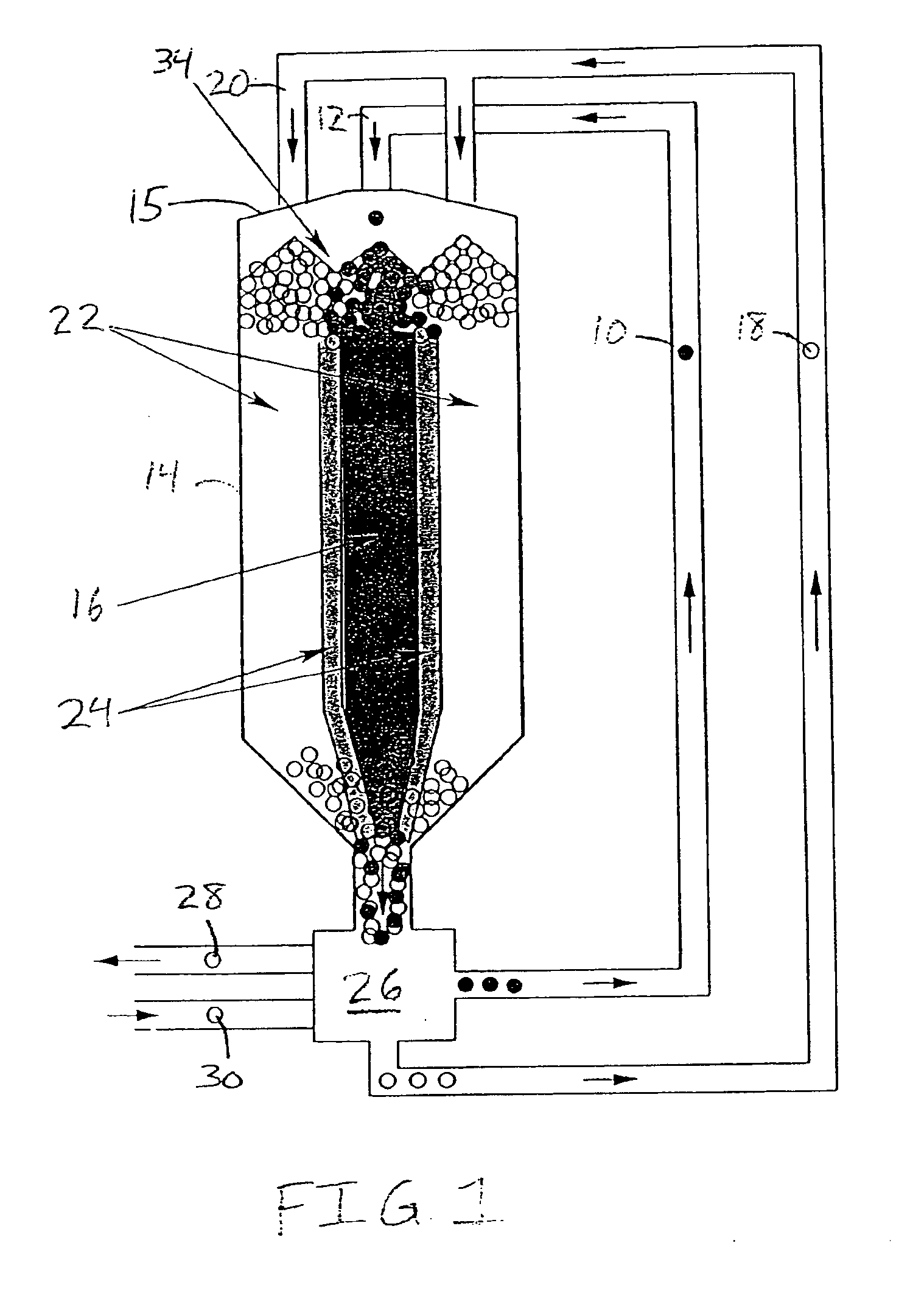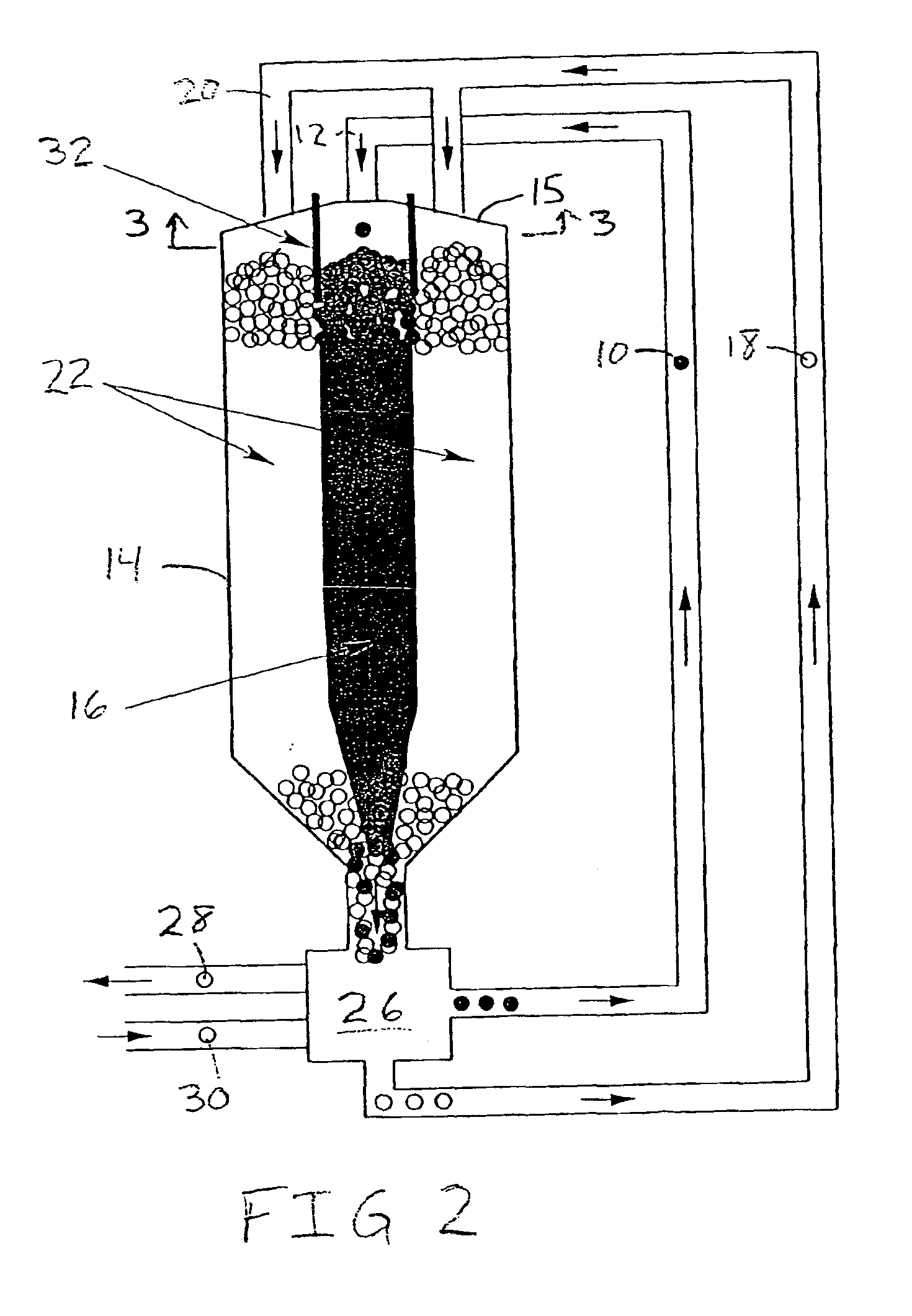Guide ring to control granular mixing in a pebble-bed nuclear reactor
a technology of granular mixing and pebble-bed nuclear reactor, which is applied in the direction of nuclear reactors, nuclear elements, greenhouse gas reduction, etc., can solve the problems of particle mixing, no mathematical model which correctly predicts velocity fluctuations, and the prediction of pebble composition of the core, so as to achieve unprecedented control of the core composition and thus fuel efficiency, safety, power output, and the effect of reducing the amount of pebbles
- Summary
- Abstract
- Description
- Claims
- Application Information
AI Technical Summary
Benefits of technology
Problems solved by technology
Method used
Image
Examples
Embodiment Construction
The power system of a modular pebble bed reactor includes a reactor, where thermal energy is generated by a nuclear reaction, and a power conversion unit, where the thermal energy is converted to mechanical work and then to electrical energy by a thermodynamic cycle and a generator. A fluid (particularly a gas, such as helium) is passed through the system, extracting the nuclear-generated heat from the pebble bed and delivering that heat to the power conversion unit, where the gas further serves as the working fluid. Helium is particularly suitable as the heat-transfer medium because of its chemical inertness, its phase stability through normal operating changes in a reactor, and its small nuclear-absorption cross section.
A simple way to prevent the mixing of reflector and fuel pebbles and to precisely control the composition of the core is to add a “guide ring” assembly 32 to the top of the core vessel 14, as shown in FIG. 3. The guide ring 32 can be made of graphite or some other ...
PUM
 Login to View More
Login to View More Abstract
Description
Claims
Application Information
 Login to View More
Login to View More - R&D
- Intellectual Property
- Life Sciences
- Materials
- Tech Scout
- Unparalleled Data Quality
- Higher Quality Content
- 60% Fewer Hallucinations
Browse by: Latest US Patents, China's latest patents, Technical Efficacy Thesaurus, Application Domain, Technology Topic, Popular Technical Reports.
© 2025 PatSnap. All rights reserved.Legal|Privacy policy|Modern Slavery Act Transparency Statement|Sitemap|About US| Contact US: help@patsnap.com



